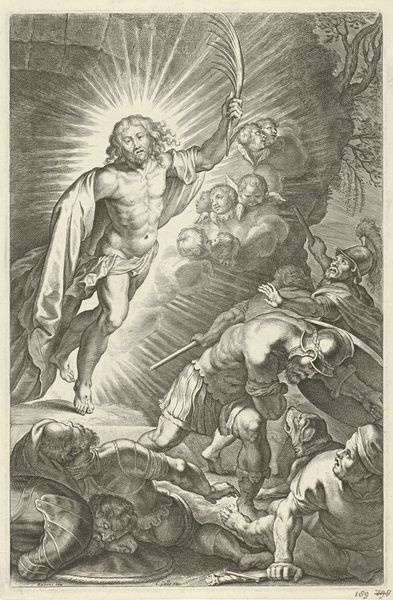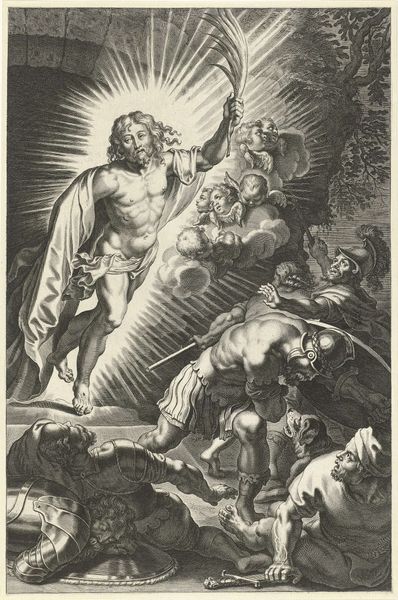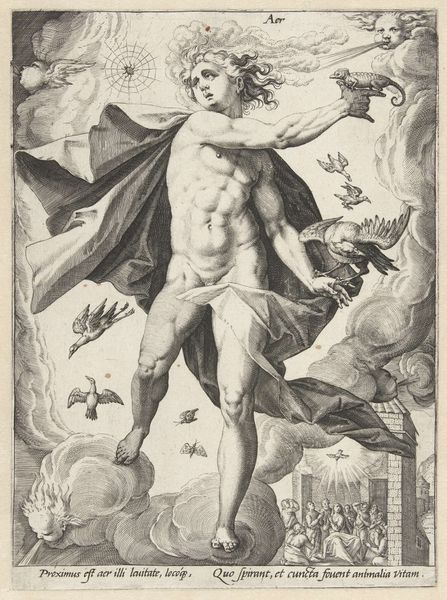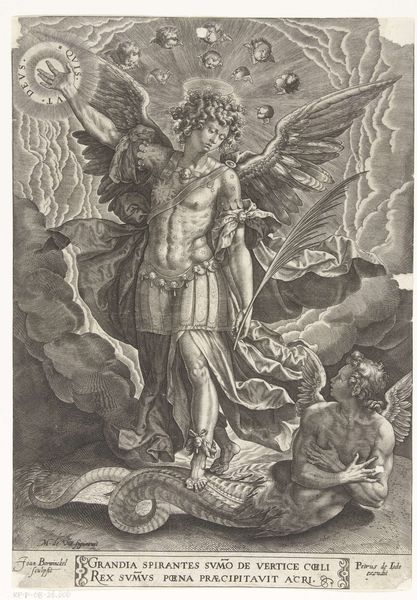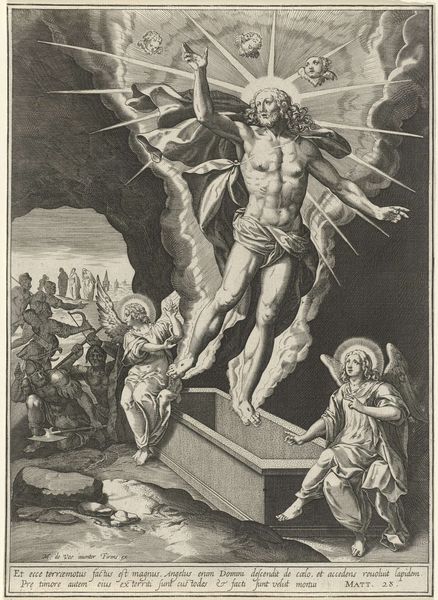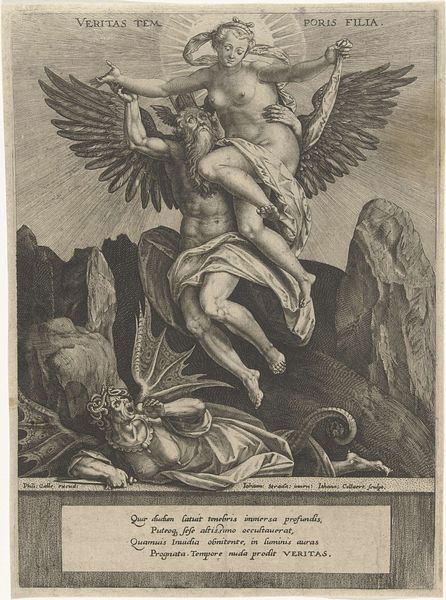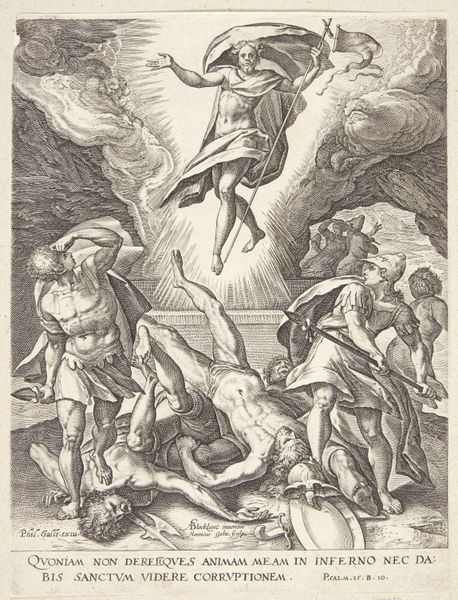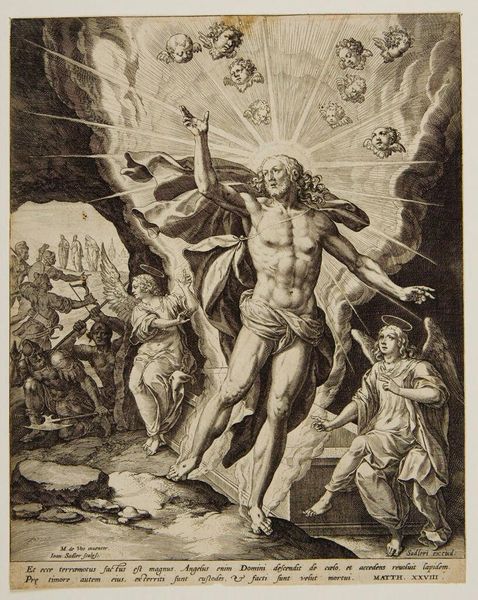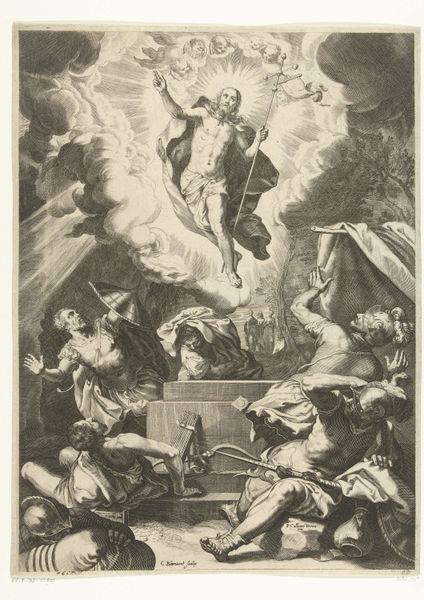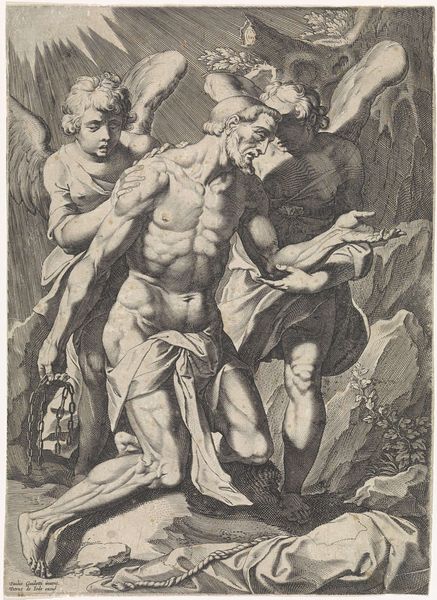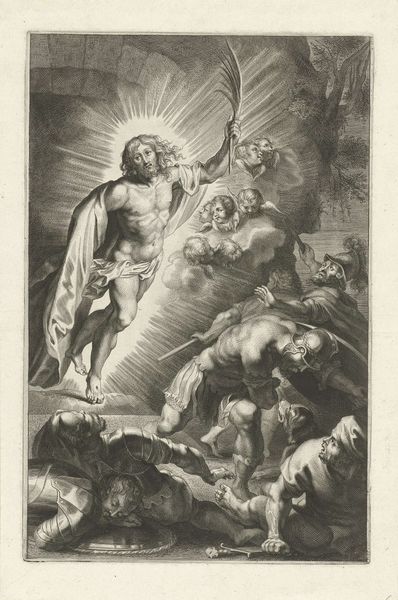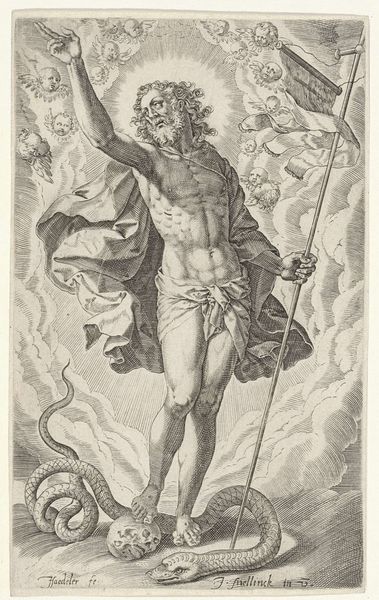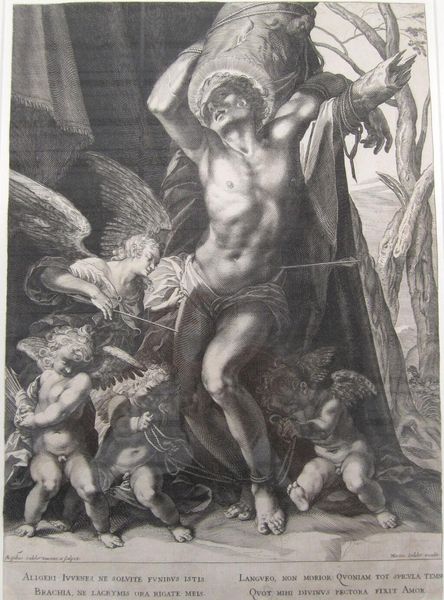
print, engraving
#
allegory
# print
#
figuration
#
11_renaissance
#
engraving
Dimensions: height 310 mm, width 215 mm
Copyright: Rijks Museum: Open Domain
Curator: This engraving, titled "Hemelvaart van Christus," or "Ascension of Christ," dates to sometime between 1579 and 1615. It's part of the Rijksmuseum's collection and is attributed to Dominicus Custos. What's your first impression? Editor: It feels otherworldly, weightless. The textures of the clouds are so palpable. There's almost a textile quality to them, even though it’s a print. Curator: I'm drawn to the composition. See how Custos employs strong diagonal lines, particularly the angelic figure supporting Christ? It directs the viewer's gaze upward. The light emanating from above bathes the figures, heightening the drama. Editor: Right, and that angelic figure really anchors the piece. You can almost feel the strain of her supporting Christ. Thinking about the material aspects, I wonder about the engraving process itself. Imagine the skill required to achieve such delicate shading with such precise lines. How many plates and proofs did it require? What sort of labor went into it? Curator: Intriguing questions. Notice the sheer volume of cherubic faces scattered throughout. Semiotically, each represents a divine witness to Christ's ascension, underscoring its significance within Christian theology. Also note how the engraver renders musculature with an almost academic precision, a testament to Renaissance ideals of humanism. Editor: The stark contrast between the almost photo-realistic rendering of the bodies with the stylised clouds. It's interesting to think of the print’s role, its consumption – presumably widespread distribution. The materials themselves would have dictated how many copies could be struck. Did each impression bear the same crisp detail as the original? Did this bring the image to a wider audience? Curator: I think it succeeds as both a piece of devotional iconography, but also a testament to the artistic ideals and sensibilities of the era in terms of form, composition and technique. Editor: Absolutely. By contemplating its production and reach, we can also gain insight into the broader cultural context that gave birth to this striking depiction.
Comments
No comments
Be the first to comment and join the conversation on the ultimate creative platform.
